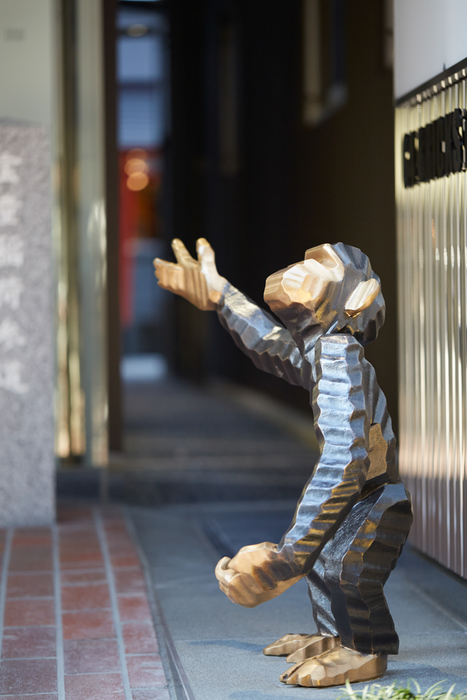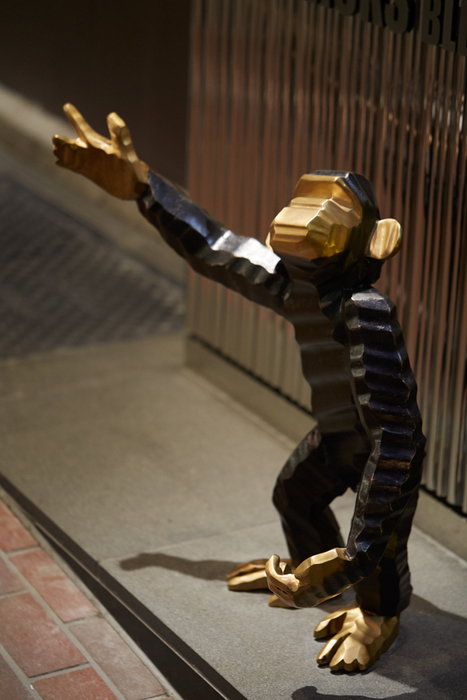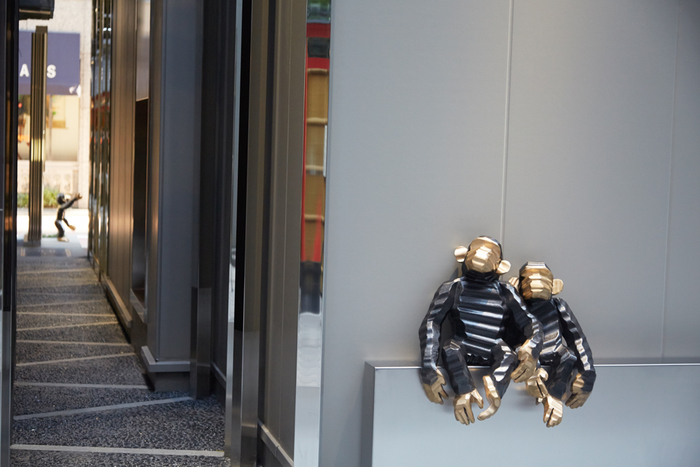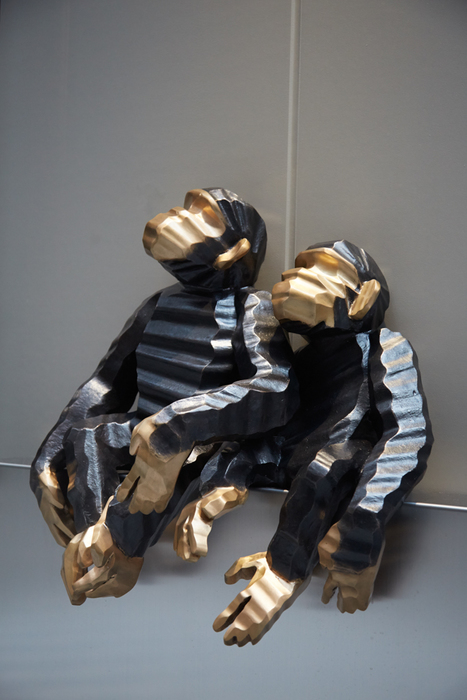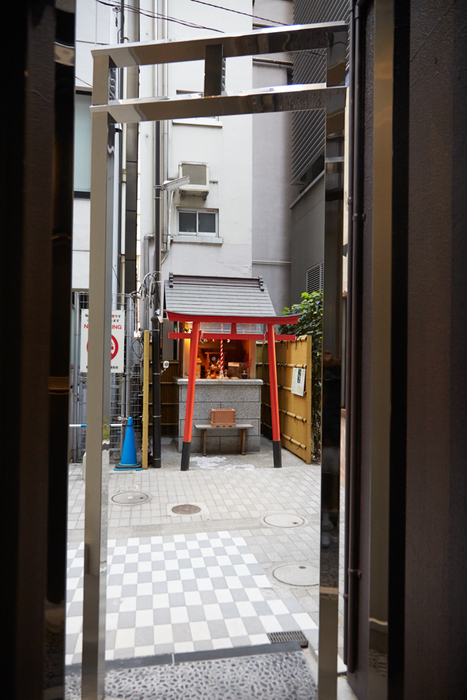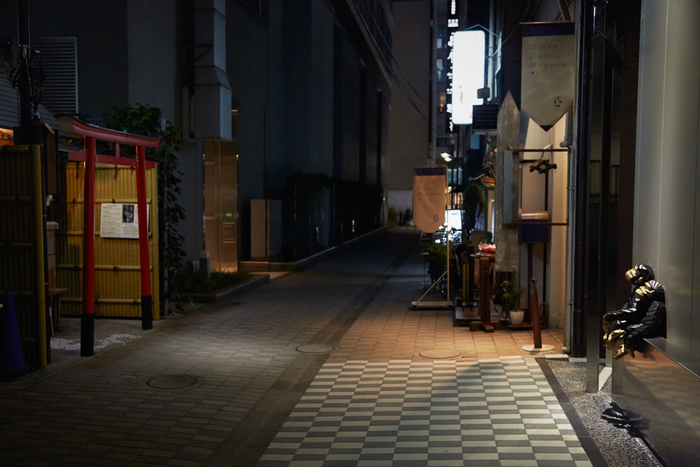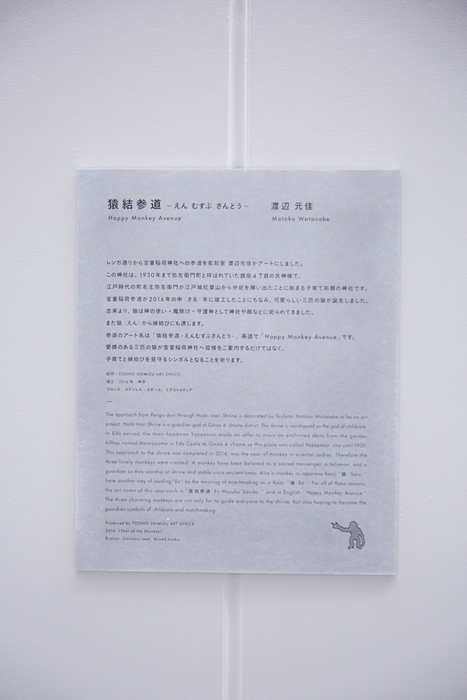猿結参道 – えん むすぶ さんどう –
Happy Monkey Avenue
2016
Bronze, Mixed media, Stainless steel
4-3-6 Ginza Chuo-ku tokyo Japan
レンガ通りから宝童稲荷神社への参道を彫刻家渡辺元佳がアートにしました。この神社は、1930年まで弥左衛門町と呼ばれていた銀座4丁目の氏神様で、江戸時代の町名主弥左衛門が江戸城紅葉山から分祀を願い出たことに始まる子育て祈願の神社です。宝童稲荷参道が2016年の申(さる)年に竣工したことにちなみ、可愛らしい三匹の猿が誕生しました。古来より、猿は神の使い・魔除け・守護神として神社や厩などに祀られてきました。また猿(えん)から縁結びにも通じます。参道のアート名は 「猿結参道 -えんむすぶさんどう-」 英語で 「Happy Monkey Avenue」です。愛嬌のある三匹の猿が宝童稲荷神社へ皆様をご案内するだけではなく、子育てと縁結びを見守るシンボルとなることを祈ります。
The approach from Renga-dori through Hodo Inari Shrine is decorated by Sculptor Motoka Watanabe to be an art project. Hodo Inari Shrine is a guardian god of Ginza 4-chome district. This shrine is worshipped as the god of childcare. In Edo period, the town headman Yazaemon made an offer to move an enshrined deity from the garden hilltop named Momijiyama in Edo Castle to Ginza 4-chome so this place was called Yazaemon-cho until 1930. This approach to the shrine was completed in 2016, was the year of monkey in oriental zodiac. Therefore the three lovely monkeys were created. A monkey have been believed as a sacred messenger, a talisman, and a guardian so they worship at shrine and stable since ancient times. Also a monkey in Japanese Kanji “猿-Saru-” have another way of reading “En” by the meaning of matchmaking as in Kanji “縁-En-.” For all of these reasons, the art name of this approach is “猿結参道-En Musubu Sando-“ and in English “Happy Monkey Avenue.” The three charming monkeys are not only for to guide everyone to the shrine, but also hoping to become the guardian symbols of childcare and matchmaking.


